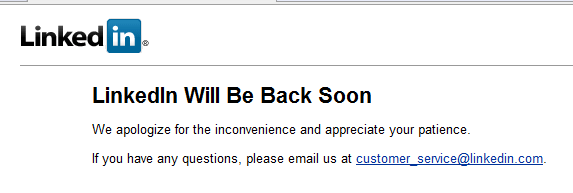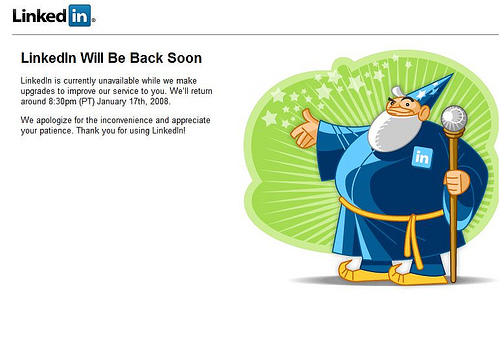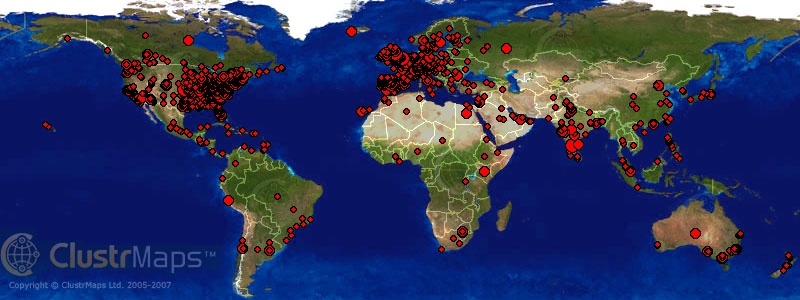<rant>
Quite a celebration: just the day after their $53M investment round, valuing the company at $1B (that’s Billion with a B) was announced, LinkedIn is down:

Is there a new emerging trend here? PR blitz, big announcement, site is dead. Other examples just this week:
Firefox Download Day leads to dead site.
Technorati Monster shows to celebrate investment + new ad network. ( But hey, new Sales Team here to help, instead of technologists)
Then there was twitter .. then .. then ….
</rant>


 Yes, I like LinkedIN, and am one of the very early users, from the early days before social networks become trendy. Simply because,
Yes, I like LinkedIN, and am one of the very early users, from the early days before social networks become trendy. Simply because, 

 ).
).


Recent Comments